Winter storm home protection is no longer simply a discussion topic–it’s a necessity. Do you live near the water in the Northeastern US? In recent years we’ve faced some surprisingly devastating hurricanes, reminding us what’s possible, and the need to prepare.
When it comes to winter storm home protection, the weakest, most exposed entry point for damage are windows and sliding glass doors.
Installing Plywood Window Storm Shutters: Better than tape.
“Don’t bother taping your windows” says Paul Craig, owner of Shade & Shutter Systems,
“That’s a waste of time,” he cautions. “It may keep glass from flying across the room, but it won’t stop tree limbs and other objects from crashing through the window as winds hit 80 miles per hour and higher.”
Installing Plywood Window Storm Shutters: One broken window can bring the house down!
A broken window can mean more than water and wind damage in a particular room. Once your windows are breached, the wind can create upward pressure on the roof, which might be enough to send it flying. If this happens, you are likely facing a total loss.
If this reality motivates you to protect your home, the options are plywood, shutters constructed from metals or new lighter technologies such as VuSafe, a see-through polycarbonate hurricane storm panel.
Installing plywood Storm Window Shutters: Plan Ahead
Plywood covers are relatively cheap and can adequately protect a home. Boards should be five-eighths to three-quarters inch thick and 8 inches wider than the area being covered. Credits: Protecting Your Windows and Sliding Doors in a Storm | Luxx Cape …
One obvious advantage of planning now is simple availability of materials. When a storm is already on its way and everyone is frantically trying to prepare, the normal supply system is quickly overloaded. You may not be quick enough to buy the materials you need, you may not get enough material to do the job properly and, quite possibly, you may end up paying far more than the standard price.
Taking the time to start buying plywood now offers many advantages: you can spread your purchases out to make them more affordable and convenient, take advantage of any lumberyard sales, and ensure that, if you don’t already own a pickup truck or similar vehicle, you can borrow one to transport your materials. Obviously, it also ensures that you can actually get the materials you need.
Buying ahead also means that you can work ahead. One of the many effects of major storms (and other potential disasters) is their effect on electrical power. And since the operative word in “power tool” is power, cutting plywood to fit your windows properly is a task best done well in advance of a disaster.
Credits: Installing Improvised Window Shutters | American Handgunner
Installing Plywood Window Storm Shutters: Best Type of Plywood
 To make plywood hurricane shutters, first make sure that you buy exterior-grade plywood that is at least 5/8″ thick. Then, take a close look at the windows of your home and determine the best way to install the shutters. If you’re lucky, the windows will be set in from the surface of the exterior wall at least 2″. If so, you can cut your shutters to fit inside the window recess. This keeps the high winds from getting under the edges of the plywood and tearing it off the house.
To make plywood hurricane shutters, first make sure that you buy exterior-grade plywood that is at least 5/8″ thick. Then, take a close look at the windows of your home and determine the best way to install the shutters. If you’re lucky, the windows will be set in from the surface of the exterior wall at least 2″. If so, you can cut your shutters to fit inside the window recess. This keeps the high winds from getting under the edges of the plywood and tearing it off the house.
Installing Plywood Window Storm Shutters: Cutting Plywood to Fit
To cut your plywood to fit, measure both the top and bottom and both sides of the window recess and check the corners with a carpenter’s square. Most windows are not perfectly square, so adjust accordingly to replicate its actual shape. Transfer that shape to your plywood and cut it out with a table saw or jigsaw.
Installing Plywood Window Storm Shutters: Bolting the Plywood
 With the panel cut to size, the next step is to install barrel bolts (the latch hardware that operates like the bolt of a rifle) about every 18″ around each panel. The ends of the bolts should be flush with the edges and the protruding end of the bolt facing outboard. Place the panel in the window, mark the spots where the barrel bolts touch the window recess, and then drill holes into the recess to allow the bolts to extend into them. If the wall around your window is brick, concrete, or stucco, you’ll need a masonry bit to do this — and a fair amount of time. That’s another reason to start now.
With the panel cut to size, the next step is to install barrel bolts (the latch hardware that operates like the bolt of a rifle) about every 18″ around each panel. The ends of the bolts should be flush with the edges and the protruding end of the bolt facing outboard. Place the panel in the window, mark the spots where the barrel bolts touch the window recess, and then drill holes into the recess to allow the bolts to extend into them. If the wall around your window is brick, concrete, or stucco, you’ll need a masonry bit to do this — and a fair amount of time. That’s another reason to start now.
Installing Plywood Window Storm Shutters: Mounting the Plywood
If you don’t have recessed windows, you’ll have to mount your plywood shutters flush to the surface of the outer wall. You’ll also have to anchor them very securely into the framework of the wall to keep them from being torn off by the wind. To do this, it’s best to cut the panels at least 8″ larger than the size of the window so you’ll have 4″ overlap on all four sides. Drill a series of holes 2″ from every edge about 18″ apart. Then, center the shutter over the window and mark through the holes onto the wall.  With those marks as guides, drill holes into the wall to receive lag bolts. For windows 3×4′ or smaller installed on a wood frame house, use 1/4″ lag bolts and plastic-coated permanent anchors. The lag bolts must penetrate the siding and frame surrounding the window at least 1-3/4″. For larger windows, use 3/8″ lag bolts that penetrate the wall and surrounding frame at least 2-1/2″.
With those marks as guides, drill holes into the wall to receive lag bolts. For windows 3×4′ or smaller installed on a wood frame house, use 1/4″ lag bolts and plastic-coated permanent anchors. The lag bolts must penetrate the siding and frame surrounding the window at least 1-3/4″. For larger windows, use 3/8″ lag bolts that penetrate the wall and surrounding frame at least 2-1/2″.
Installing Plywood Window Storm Shutters: Finishing Touches
 To finish your panel, drill four small holes in the center of the panel to equalize air pressure and, if necessary, attach handles to it to make it easier to maneuver. You’ll also want to waterproof it with exterior paint or weatherproof sealant. Finally, do a basic sketch of your house and number every window that receives a shutter. Then, as you complete each panel, number them to match to prevent confusion when installing them. Credits: Installing Improvised Window Shutters | American Handgunner
To finish your panel, drill four small holes in the center of the panel to equalize air pressure and, if necessary, attach handles to it to make it easier to maneuver. You’ll also want to waterproof it with exterior paint or weatherproof sealant. Finally, do a basic sketch of your house and number every window that receives a shutter. Then, as you complete each panel, number them to match to prevent confusion when installing them. Credits: Installing Improvised Window Shutters | American Handgunner
Installing Plywood Window Storm Shutters: Safe Plywood Storage
Safely storing all this plywood you’re prepared against a potential hurricane brings to mind the issue of termites. Imagine in those frantic moments of hurricane preparation that you go to the plywood, all carefully pre-cut and staced, only to find it discintegrating and useless due to termite activity!
 Avoid this potential disaster by…
Avoid this potential disaster by…
Calling ApolloX Pest Control
(888) 499-7378
We’ll make sure your plywood shutters, and additionally all the wooden structure of your home is protected against termite invasion!
 Winter Pest Inspection Checklist – 9 Exterior Items to Check
Winter Pest Inspection Checklist – 9 Exterior Items to Check Winter Pest Inspection Checklist – Seal Openings
Winter Pest Inspection Checklist – Seal Openings









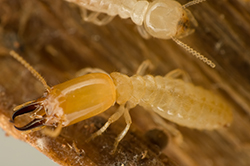





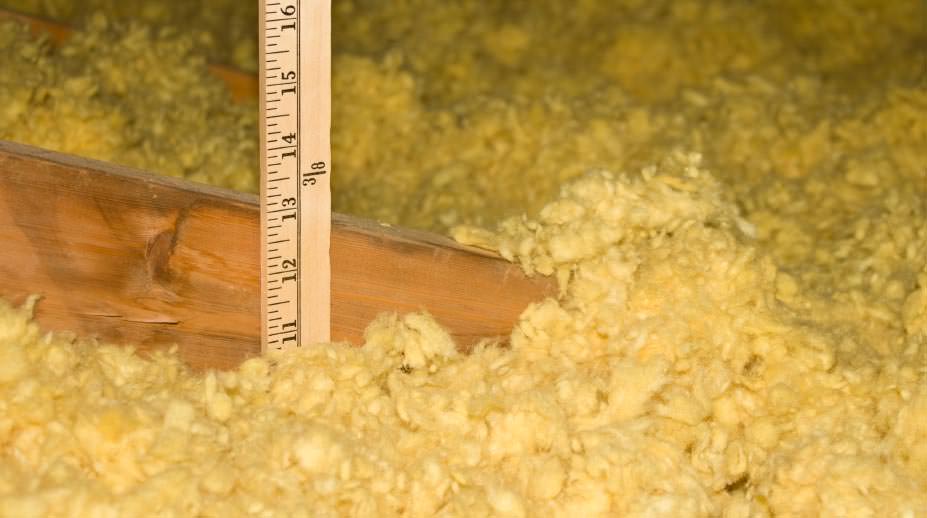






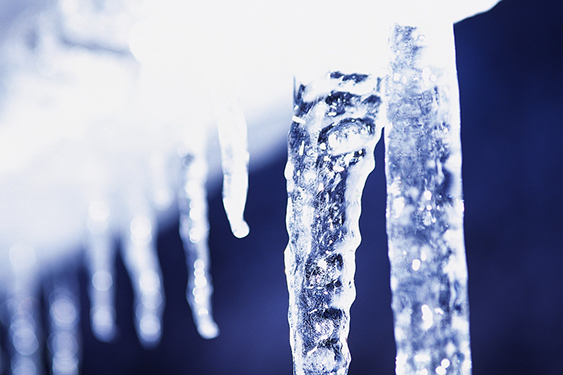 We came across this Winter home protection punch list and thought we’d pass it on to our readers. Every Winter your home faces the very same forces of nature that gradually wear down mountains. Following the actions on this quick list will slow down that erosion process when it comes to your home so that you can enjoy many years of comfort and at some point realize a higher resale value.
We came across this Winter home protection punch list and thought we’d pass it on to our readers. Every Winter your home faces the very same forces of nature that gradually wear down mountains. Following the actions on this quick list will slow down that erosion process when it comes to your home so that you can enjoy many years of comfort and at some point realize a higher resale value.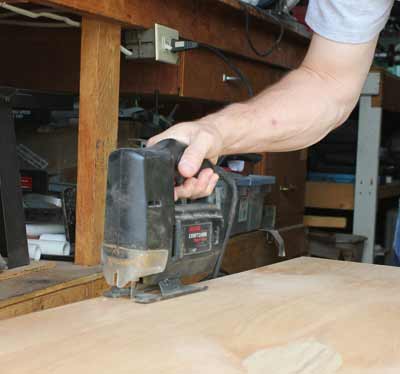 To make plywood hurricane shutters, first make sure that you buy exterior-grade plywood that is at least 5/8″ thick. Then, take a close look at the windows of your home and determine the best way to install the shutters. If you’re lucky, the windows will be set in from the surface of the exterior wall at least 2″. If so, you can cut your shutters to fit inside the window recess. This keeps the high winds from getting under the edges of the plywood and tearing it off the house.
To make plywood hurricane shutters, first make sure that you buy exterior-grade plywood that is at least 5/8″ thick. Then, take a close look at the windows of your home and determine the best way to install the shutters. If you’re lucky, the windows will be set in from the surface of the exterior wall at least 2″. If so, you can cut your shutters to fit inside the window recess. This keeps the high winds from getting under the edges of the plywood and tearing it off the house.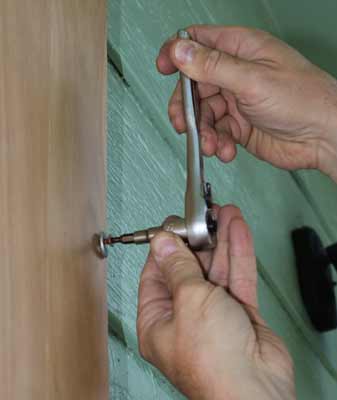 With the panel cut to size, the next step is to install barrel bolts (the latch hardware that operates like the bolt of a rifle) about every 18″ around each panel. The ends of the bolts should be flush with the edges and the protruding end of the bolt facing outboard. Place the panel in the window, mark the spots where the barrel bolts touch the window recess, and then drill holes into the recess to allow the bolts to extend into them. If the wall around your window is brick, concrete, or stucco, you’ll need a masonry bit to do this — and a fair amount of time. That’s another reason to start now.
With the panel cut to size, the next step is to install barrel bolts (the latch hardware that operates like the bolt of a rifle) about every 18″ around each panel. The ends of the bolts should be flush with the edges and the protruding end of the bolt facing outboard. Place the panel in the window, mark the spots where the barrel bolts touch the window recess, and then drill holes into the recess to allow the bolts to extend into them. If the wall around your window is brick, concrete, or stucco, you’ll need a masonry bit to do this — and a fair amount of time. That’s another reason to start now.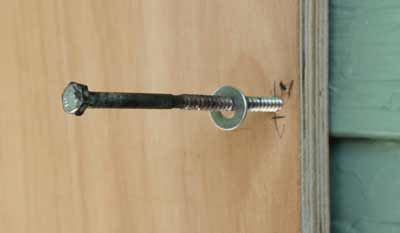 With those marks as guides, drill holes into the wall to receive lag bolts. For windows 3×4′ or smaller installed on a wood frame house, use 1/4″ lag bolts and plastic-coated permanent anchors. The lag bolts must penetrate the siding and frame surrounding the window at least 1-3/4″. For larger windows, use 3/8″ lag bolts that penetrate the wall and surrounding frame at least 2-1/2″.
With those marks as guides, drill holes into the wall to receive lag bolts. For windows 3×4′ or smaller installed on a wood frame house, use 1/4″ lag bolts and plastic-coated permanent anchors. The lag bolts must penetrate the siding and frame surrounding the window at least 1-3/4″. For larger windows, use 3/8″ lag bolts that penetrate the wall and surrounding frame at least 2-1/2″.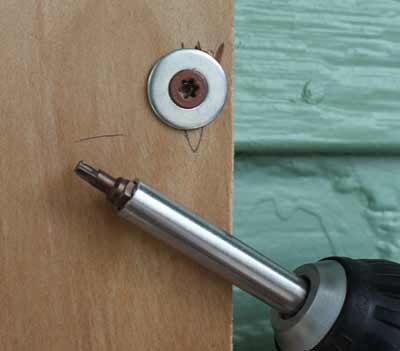
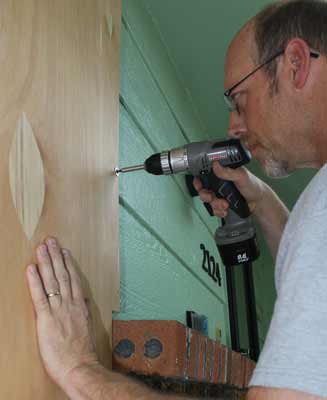 Avoid this potential disaster by…
Avoid this potential disaster by…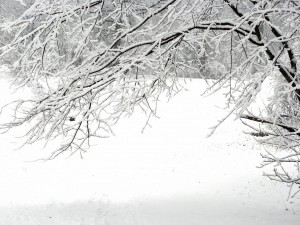






Recent Comments